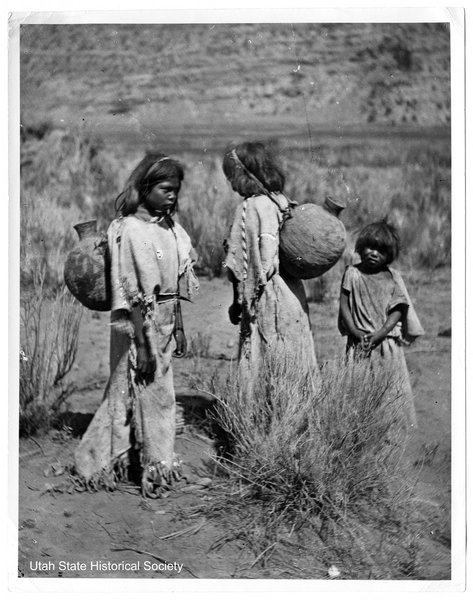Dublin Core
Title
Description
It's widely agreed that everyone has the right to water. Yet, ideas about how to justly allocate water within a community depend on cultural values – about which there are many disagreements. Take Utah’s desert town of Kanab for example.
The Kaibab Paiute people indigenous to the Kanab region have long-held, sacred connections to their ancestral lands. For them, natural resources – such as water – cannot be owned, but are alive and share common ancestry with all people. There is a communal responsibility to protect and respect water sources. Early Kaibab Paiute people relied on deep knowledge of where and when water could be found, and their mobile lifestyle had minimal impact on the land. Even after displacement by Mormon colonization in the 19th century, they remained connected. According to tribal elder Daniel Bulletts, the question “Where is your water?” is still a way to identify where your family homelands once were.
The Mormon families who settled Kanab in 1870 also saw themselves as stewards of natural resources. They brought cultural beliefs about water formed in wetter environments and valued agriculture as a means to independence. Claiming ownership over natural resources, they changed the arid landscape to support their farming lifestyle by constructing irrigation canals, dams, and ditches. These massive agriculture systems built with group effort required careful water allocation guided by the LDS Church through its local bishops. While the church encouraged a communal view of water, population growth and an increasingly capitalist economy required the creation of legal entities to oversee its distribution.
A third vision for fair allocation of water also comes from Kanab, where geologist John Wesley Powell based his scientific survey in 1871. Facing the popular belief that plowing arid regions would increase rainfall, Powell argued that people should work within the natural limits of the land. In Kanab he devised a new plan for Congress where political boundaries were drawn along watersheds and growth minimized in places with too little water. Instead of a West divided by straight lines, Powell’s vision would have led to a very different water allocation system than we see today. And shows just how much our cultural beliefs shape who gets water.
Creator
Source
_______________
See Kanab Museum, exhibition file for Water Right, curated by Emily Bentley, 2020; Gregory E. Smoak, Utah Water Ways (Utah Humanities, 2020); Martha Sonntag Bradley, A History of Kane County (Utah State Historical Society and Kane County Commission, 1999); Jedediah S. Rogers and Matthew C. Godfrey, eds., The Earth Will Appear as the Garden of Eden: Essays on Mormon Environmental History (Utah, 2019); John Wesley Powell, et. al., Report on the Lands of the Arid Region of the United States (Government Printing Office, 1878).

